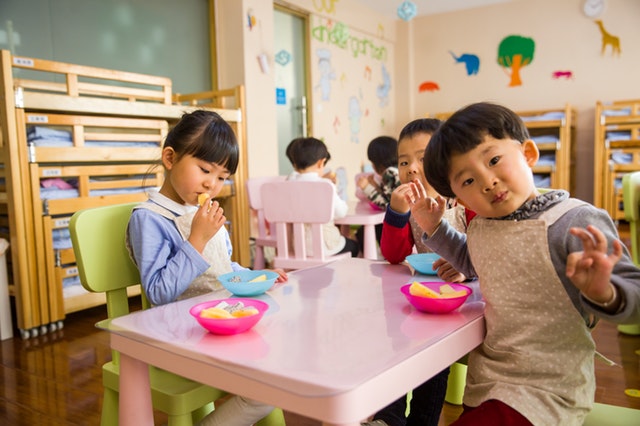When someone wants you to do something, how would you like them to communicate that to you?
“Don’t do that. Do this. Stop that. Give that to them. Put that back. Turn that off. Stay here. Sit down. Get dressed. Brush your teeth. Go to the bathroom. Eat your food. Go to bed. Say please. Say goodbye. Give them a hug. Be polite. Be nice. Be happy. Don’t cry. Calm down….”
Being told what to do may not be too bothersome sometimes, but how often do our kids hear these things from us?
Believe it or not, our kids really don’t need to be told what to do all the time, and they don’t want to either! But when we do constantly make these demands, they can learn to become dependent on what we say instead of ever learning to do things for themselves.

If I always tell my child when to eat (and what), it will be more challenging for them to recognize their own hunger and learn what their body needs. If I always tell my child how to interact with another child (what to say, how to play, who can have a turn with what and when, etc.), it will be difficult for them to learn how to interact with each other, solve problems together, and gain important social skills.
If instead, I work with my child, giving them the freedom to make choices and the space to think for themselves, then they won’t need anyone to tell them what to do, because they will want to do it themselves. And our relationship will grow stronger as I display trust and confidence in their abilities.
So when we’re trying to leave the house, instead of saying, “Go potty. Put your shoes on. Grab a jacket. Etc.” I might say, “Hey, we need to go to such and such place, what do we need to do before we can get in the car?” This gets kids thinking. And because the to-do list comes from their own mind, they’ll often just do it, quickly and happily. And if they need a reminder, “Will we need jackets there? … The park doesn’t have a bathroom, so I’m gonna go potty before we leave. … Which shoes do you want to wear?”
And If we’re at the store and they pick up a toy, instead of saying, “Stop touching things. Put that back, I’m not buying that. You have enough toys at home.” I’ll let them be, and they’ll look at it, and probably talk about how cool it is and how much they’d like to have it. I’ll agree with them, “That’s cool. That does look fun. Etc.” Maybe even, “Let’s take a picture and put that on your wish list!” And then after a moment, “Ok let’s go find whatever it is we came here to get. … Can you help me find this thing? … What else is on our list?”
There are so many ways to communicate that don’t involve making constant demands. When we give our kids the freedom to think for themselves, they might just surprise us with how much they already know. And the things they don’t know, they will learn, often without us having to tell them at all.
What freedom can you give your own child today?

0 Comments